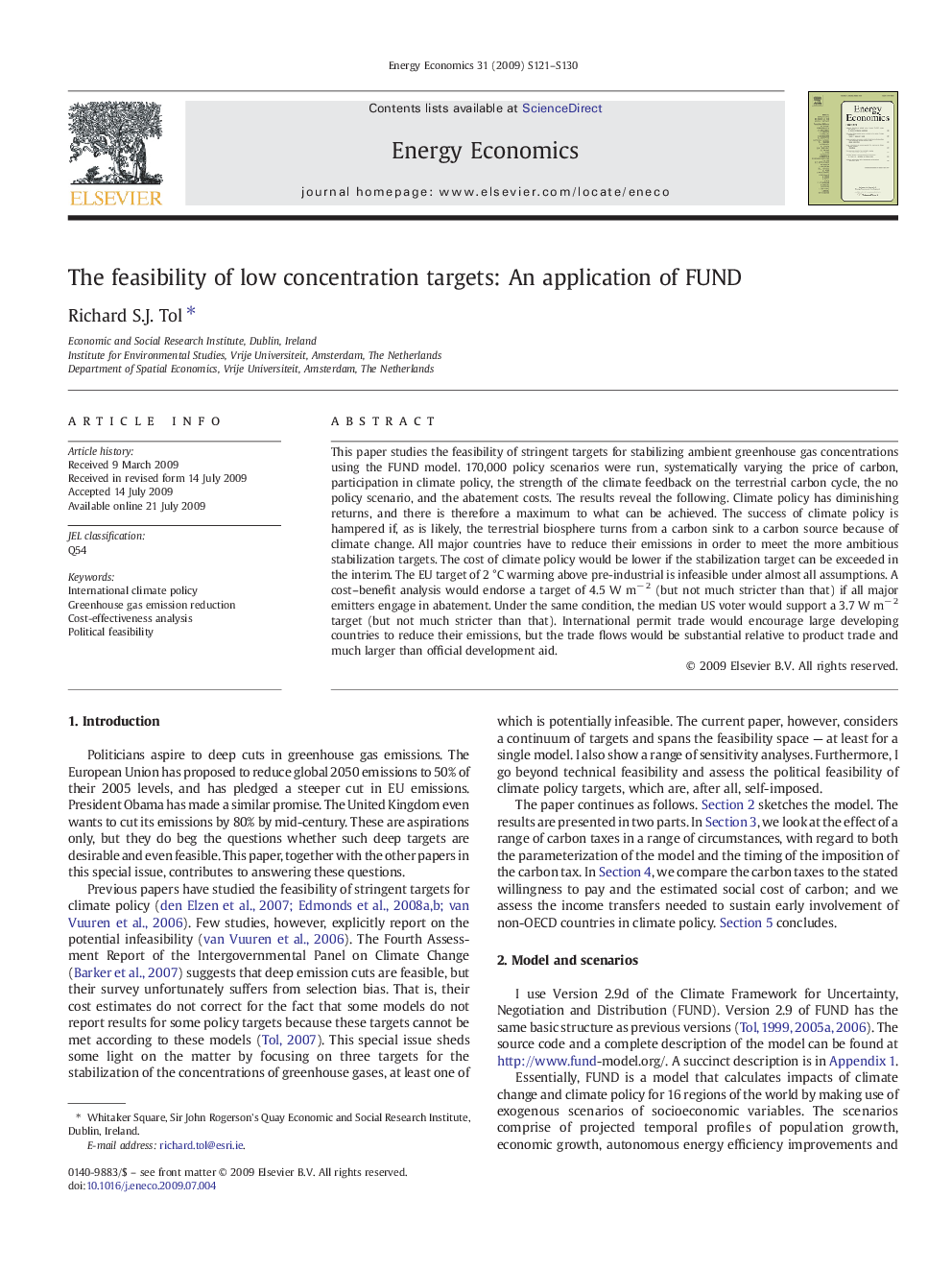| کد مقاله | کد نشریه | سال انتشار | مقاله انگلیسی | نسخه تمام متن |
|---|---|---|---|---|
| 5065772 | 1372329 | 2009 | 10 صفحه PDF | دانلود رایگان |
عنوان انگلیسی مقاله ISI
The feasibility of low concentration targets: An application of FUND
دانلود مقاله + سفارش ترجمه
دانلود مقاله ISI انگلیسی
رایگان برای ایرانیان
کلمات کلیدی
موضوعات مرتبط
مهندسی و علوم پایه
مهندسی انرژی
انرژی (عمومی)
پیش نمایش صفحه اول مقاله

چکیده انگلیسی
This paper studies the feasibility of stringent targets for stabilizing ambient greenhouse gas concentrations using the FUND model. 170,000 policy scenarios were run, systematically varying the price of carbon, participation in climate policy, the strength of the climate feedback on the terrestrial carbon cycle, the no policy scenario, and the abatement costs. The results reveal the following. Climate policy has diminishing returns, and there is therefore a maximum to what can be achieved. The success of climate policy is hampered if, as is likely, the terrestrial biosphere turns from a carbon sink to a carbon source because of climate change. All major countries have to reduce their emissions in order to meet the more ambitious stabilization targets. The cost of climate policy would be lower if the stabilization target can be exceeded in the interim. The EU target of 2 °C warming above pre-industrial is infeasible under almost all assumptions. A cost-benefit analysis would endorse a target of 4.5 W mâ 2 (but not much stricter than that) if all major emitters engage in abatement. Under the same condition, the median US voter would support a 3.7 W mâ 2 target (but not much stricter than that). International permit trade would encourage large developing countries to reduce their emissions, but the trade flows would be substantial relative to product trade and much larger than official development aid.
ناشر
Database: Elsevier - ScienceDirect (ساینس دایرکت)
Journal: Energy Economics - Volume 31, Supplement 2, December 2009, Pages S121-S130
Journal: Energy Economics - Volume 31, Supplement 2, December 2009, Pages S121-S130
نویسندگان
Richard S.J. Tol,